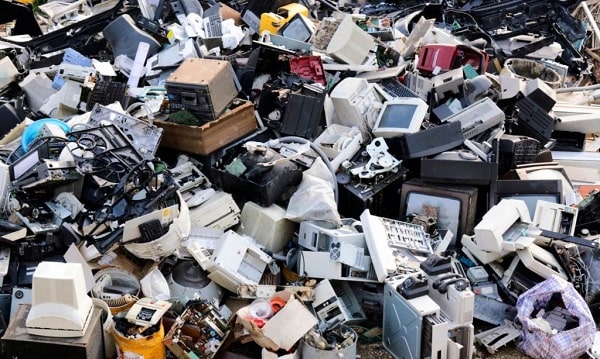
In today’s digital age, large enterprises face a significant challenge in effectively managing their electronic waste, or eWaste. The rapid advancement of technology has led to a constant stream of obsolete devices and electronic components, requiring organizations to adopt robust strategies for eWaste management.
This article aims to provide insights into effective strategies that large enterprises can implement to ensure compliance with regulations while reducing costs associated with eWaste disposal.
Internal eWaste Collection Systems:
Large enterprises should establish efficient internal eWaste collection systems to ensure proper handling and disposal of electronic devices. This can involve designating specific collection points across different office locations, providing clear instructions and guidelines for employees, and conducting regular awareness campaigns to promote responsible eWaste disposal.
By centralizing the collection process, organizations can streamline the management of eWaste and ensure that it doesn’t end up in landfill sites or unauthorized channels.
Partnership with Certified Recyclers:
Collaborating with certified eWaste recyclers is crucial for large enterprises seeking to manage their eWaste effectively. These partnerships ensure that eWaste is handled by professionals who adhere to stringent environmental and data security standards.
Large enterprises should conduct thorough due diligence before selecting a recycling partner, considering factors such as certifications, track record, and their ability to handle the organization’s specific eWaste requirements. By working with reputable recyclers, enterprises can mitigate risks associated with improper disposal and enhance their compliance efforts.
Optimization of Logistics and Transportation:
The logistics and transportation aspect of eWaste management can significantly impact both costs and compliance. Large enterprises should optimize their transportation processes to minimize the environmental impact and maximize efficiency.
This can include consolidating shipments, utilizing route optimization software, and exploring options for reverse logistics, such as coordinating with suppliers to include eWaste pickup during new equipment deliveries. By streamlining logistics, enterprises can reduce transportation costs and enhance their overall eWaste management strategy.
Data Analytics for eWaste Tracking and Management:
Utilizing data analytics can provide valuable insights into an organization’s eWaste generation and disposal patterns. Large enterprises can implement robust tracking systems that capture relevant data points, such as the type and quantity of eWaste generated, disposal methods used, and associated costs. Analyzing this data can help identify opportunities for cost reduction, process optimization, and compliance enhancement.
Furthermore, data analytics can assist in identifying trends and areas where employee training or awareness initiatives may be required.
Collaboration with Manufacturers and Suppliers:
Establishing collaborative relationships with manufacturers and suppliers can yield mutual benefits in terms of eWaste management. Large enterprises can engage with manufacturers to explore options for take-back programs, extended product lifecycles, and responsible disposal of end-of-life equipment.
Additionally, enterprises can consider sourcing products from environmentally conscious suppliers who adhere to sustainable manufacturing practices. Such collaborations contribute to the overall goal of reducing eWaste generation and ensuring responsible disposal throughout the product lifecycle.
Conclusion:
eWaste management is a pressing issue for large enterprises, necessitating proactive strategies to ensure compliance and cost reduction. By implementing internal eWaste collection systems, partnering with certified recyclers, optimizing logistics and transportation, leveraging data analytics, and collaborating with manufacturers and suppliers, organizations can enhance their eWaste management efforts.
These strategies not only help meet regulatory requirements but also contribute to environmental sustainability and responsible business practices. Large enterprises must embrace the challenge of eWaste management as an opportunity to make a positive impact while optimizing their operations.